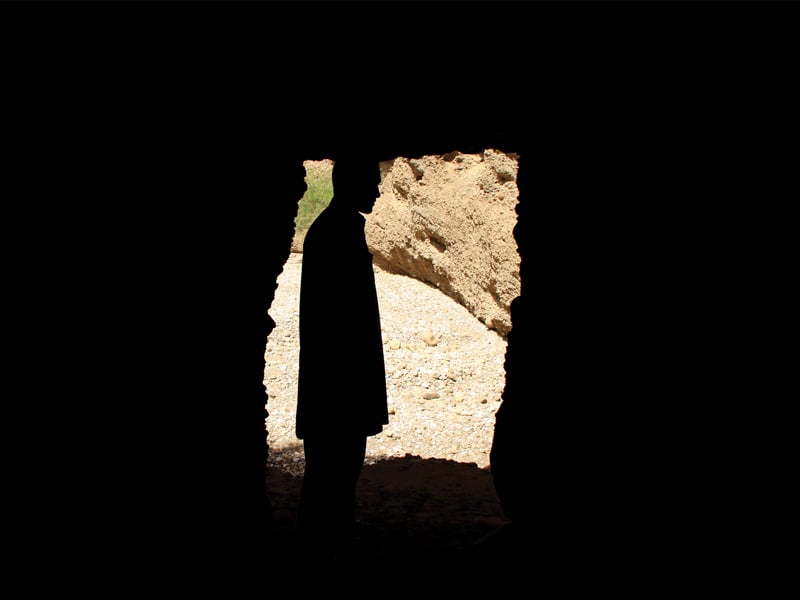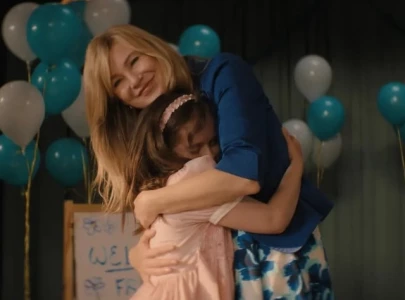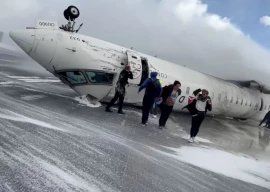
Our plan, when we left Khuzdar, was to stop over at the Cave City — if, indeed, we found it — and take photos.
We travelled on the RCD Highway and, with the judicious use of Google maps, were able to pick our way to Bela. But since there were no road directions to Gondrani, we stopped locals and quizzed them about the way to the “puraney ghaar” (old caves). At first we got only blank looks or incomprehensible directions. Then we found Asif, a middle-aged man who told us that he was a police inspector. Not only did he claim to know the place, he also offered to take us there. With Asif as our guide, we drove north, then turned west and started following a narrow but carpeted road. After many miles, the road turned into a dirt road and finally, there was no road at all. We hit a riverbank and after a distance of almost three miles, Asif made us park the vehicle. I poked my head out the window, straining to see in the direction Asif was pointing. A distant mountain with black holes was my first sight of the Cave City of Balochistan.
It was a 10-minute walk to the caves — an arduous one, at that, over a dry riverbed strewn with rocks. But my curiosity was growing as were the black holes which had seemed tiny from a distance.
The place was pretty much deserted and, in the absence of locals, Asif was our only source of information. His version of the history of this place was fanciful, to say the least. According to him, these mountains used to be the home of demons and evil spirits who would satiate their appetite with the flesh of the locals of Gondrani. That is until Mai Gondrani, a holy lady, sacrificed her life to kill these demons and save the rest from their scourge. Now she rests in her shrine in the nearby village in Sher-e-Roghan. We listened, intrigued and mystified. This version of the story gave rise to more questions than answers: Who would have really lived here? Why did they leave? Would it before or after the Indus civilisation?
As we approached the mountains, more caves came into sight. With scenes from Hollywood movies about lost treasures flashing in my mind, I scrambled to explore every single cave. Only I wasn’t in search of the Ark of the Covenant or Montezuma’s gold. Here, the treasure was simply having discovered such a unique place in Pakistan. Inside the caves I saw that a typical ‘cave house’ had one veranda and two separate rooms. I even saw what I gathered was a kitchen of sorts, having separate compartments for storage. Another seemed like a living room or a bedroom. In the aforementioned article, Salman Rashid says that the Cave City would have been a class conscious society and I could easily figure that out, seeing the contrast between the ill-constructed houses and the well-formed ones.
Unlike cave cities elsewhere — Kandovan in Iran and Cappadocia in Turkey come to mind — the Cave City of Balochistan is uninhabited, though the caves do provide a home for bats. These caves are the worse for erosion and, as far as I could see, no effort has been made to preserve them. Barely accessible, since there is no path that leads to them, they are also difficult to explore higher than the two lowest levels for those without any climbing expertise. Had this site been anywhere else in the world, it would have been preserved as a world heritage site, but sadly it is crumbling in neglect here.
Our little expedition ended with a stopover in Hub for tea and then we headed to Karachi, leaving behind a silent city, a mysterious mountain.
Published in The Express Tribune, Sunday Magazine, February 19th, 2012.























COMMENTS
Comments are moderated and generally will be posted if they are on-topic and not abusive.
For more information, please see our Comments FAQ